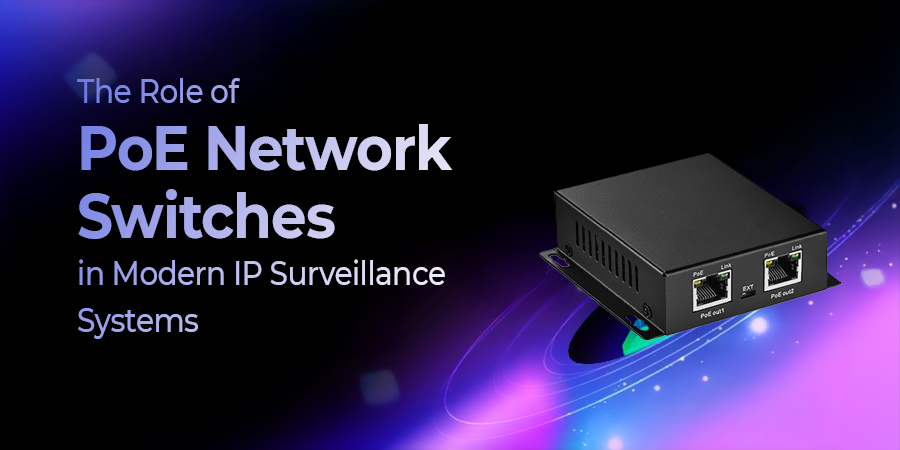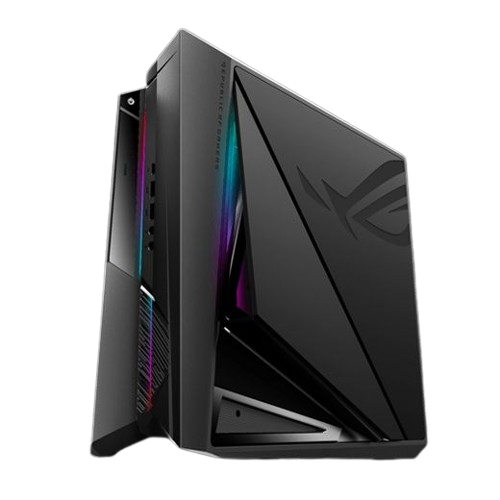The Role of PoE Network Switches in Modern IP Surveillance Systems

Server Tech Central
7/28/2025

A modern IP surveillance system is a network-based security monitoring solution that uses Internet Protocol (IP) technology to transmit and record video. It uses digital cameras (IP cameras) to capture and transmit video footage over a local network or the internet. This security system offers high resolution, remote accessibility, and the ability to integrate with other security and smart devices.
The key components involved in an IP surveillance system include IP cameras, a Network Video Recorder (NVR), Management Software (VMS), and a PoE Network Switch.
The demand for IP surveillance systems is increasing rapidly due to technological advancements, growing security concerns, and the need for enterprise-level networking. It is now mandatory to ensure robust security while maintaining seamless connectivity. Here, the PoE network switch emerges as a pivotal technology that offers enhanced protection for connected systems. It makes it easy to run multiple IP cameras within a single system.
Let's explore more about this network switch, its features, types, and how it is revolutionizing modern surveillance systems.
What is a PoE Network Switch?
Imagine using a security system without the need for analog CCTV deployment, wiring, or additional electric outlets. A PoE (Power over Ethernet) network switch, as the name suggests, is a device that enables the transmission of both power and data over a single Ethernet cable. It saves you from the mess of tangled wires.
Moreover, it offers a simplified installation process and provides a convenient way to manage your IP surveillance system remotely.
How a PoE Network Switch Works?
A Power over Ethernet switch works by delivering both power and data over a single Ethernet cable to the connected devices. The connected devices include IP cameras, wireless access points, and VoIP phones. On plugging in a device, the switch first performs a detection process to check if the device supports PoE.
If it appears to be compatible, it supplies the correct amount of DC power based on the device’s requirements while handling data transmission. It mitigates the need for separate power adapters or outlets.
Moreover, this switch features intelligent power management that ensures safe power delivery against overloads, short circuits, and power surges.
The Role of PoE Network Switch in Network Security
The key role of a PoE network switch is centralized and flexible power management. It powers critical components like IP surveillance cameras, access control systems, VoIP phones, and wireless access points. It ensures that they remain operational with minimal infrastructure complexity.
Moreover, its ability to support VLANs, quality of service, and secure management features also enhances network segmentation and protection against cyber threats.
Types of PoE Network Switches
PoE switches are categorized based on management capabilities, power output, and port density.
Managed PoE switch: These switches offer advanced network control and configuration capabilities. They support features like VLANs, quality of service, port monitoring, and traffic control.
Unmanaged PoE Switch: These are plug-and-play devices suitable for simple networking, requiring no configuration.
SMART (Web-Managed) PoE Switch: These switches offer basic management features through a web-based interface. They are suitable for enterprises that require medium-sized surveillance systems with limited configuration.
PoE Switches by Power Standard
Type 1: PoE (IEEE 802.3af): Provides up to 15.4 watts of power per port. (suitable for standard IP cameras)
Type 2: PoE+ (IEEE 802.3at): Delivers up to 30 watts of power per port. (supports PTZ cameras and devices with higher power needs.
Type 3 or Type 4: PoE++ (IEEE 802.3bt): Offers the highest power output, up to 60 or even 100 watts per port, depending on the specific standard.
PoE Switches by Port Count: 4-Port, 8-Port, 16-Port, 24-Port, 48-Port, etc. They are selected based on the number of cameras or devices that are connected.
Why PoE is Critical for IP Surveillance Systems
PoE has become critical for IP surveillance systems because it delivers power and data over a single cable and offers unmatched simplicity, cost-effectiveness, reliability, and scalability. Power is supplied from the PoE switch, allowing centralized control over all cameras. It provides the ability to remotely power cycle cameras when needed, reducing downtime.
Moreover, it integrates with UPS (Uninterruptible Power Supply) for continued operation during power shortages and ensures continuous surveillance.
Modern cameras feature options such as 4K resolution, PTZ (Pan-Tilt-Zoom), and IR night vision, as well as heaters and microphones, which require additional power. PoE delivers the high power needed for these advanced devices.
Key Benefits of Using PoE Switches in Surveillance Networks
Using Power over Ethernet (PoE) switches in surveillance networks offers several benefits, including simplified installation, a scalable server power solution, enhanced device management, support for advanced cameras, improved safety, and energy-efficient operations.
These benefits make these switches desirable for both small-scale and enterprise-grade surveillance infrastructure.
Multiple Applications of PoE Network Switches
The PoE switches offer versatility by powering a wide range of devices across various sectors, including security, communication, wireless networking, smart buildings, and industrial automation. They work efficiently with video conferencing equipment, projectors, and IP-based speakers.
Moreover, they enable centralized management of building automation systems. They are also used in VoIP desk phones and would allow phones to remain operational during power outages, provided they are paired with a UPS.
Choosing the Right PoE Switch for Your IP Surveillance Needs
When selecting a PoE switch for your IP surveillance system, several key factors should be taken into consideration.
Number of Ports: Determine the number of ports you require to accommodate all your IP cameras and other devices. Ensure that your switch has enough ports to support the entire surveillance system.
Power Determination: Verify your switch's power rating to ensure it can provide sufficient power to all your devices.
Network Speed: Verify the network speed supported by the switch. The network speed should match your surveillance needs and support high data transmission to ensure smooth video streaming and data transfer.
Advanced Features: Consider the advanced features that you may require, such as VLAN support or PoE scheduling. These features can enhance the functionality and management of your IP surveillance system.
After considering these features, you can select the ideal network switch that meets the requirements of your IP surveillance system.
Final Thought
Power over Ethernet (PoE) switches play a pivotal role in the efficiency and scalability of IP surveillance systems. When combined with reliable server parts—such as processors, motherboards, and storage components—they help build a future-proof infrastructure. At ServerTechCentral, we empower users with the right networking and hardware solutions to support evolving surveillance needs.
As technology continues to advance, the synergy between PoE switching and high-performance server components will be essential for driving innovation and long-term system reliability.



